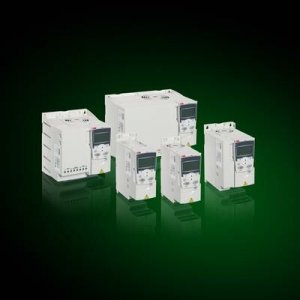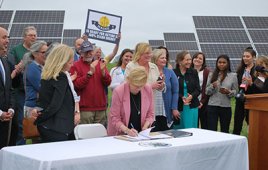
Recent variable frequency pump and fan drives from ABB save energy, compared to other flow-control methods such as throttling. Additional efficiencies come from monitoring, analyzing, and optimizing system operation
The ACS310 is intended to install and get up and running fast, particularly when it is to drive pumps and fans. The addition to ABB’s ac drive family ranges from 200 to 480 Vac, 0.5 to 30 hp (0.37 kW to 22 kW). The drive has features for pumps and fans– complemented with advanced, energy efficiency.
“This compact, easy-to-use drive offers the most advanced pump-and-fan features and pump-protection functions,” says Greg Semrow, ABB LV Drives product manager.
The ACS310 comes standard with two independent, built-in PID controllers for regulating pressure, flow, or other quantities. The PID control is widely used in automation and process industries. Applications include motor-speed control in various conveyors, pressure and temperature controls in ventilation systems, flow control in pumping systems, and different kinds of level-control applications. The second PID controller can eliminate need for an external PID controller, help improve process quality, and save energy and up-front costs.
Pump and fan control (PFC) switches auxiliary pumps on-and-off as required as capacity changes. An Auto-change function (when enabled and with the appropriate switchgear) alternates a pair of pumps on the same line to equalize their duty times. With the PFC feature, one drive controls several pumps or fans in parallel. Auto-change periodically increments the position of each motor in the rotation – that is, a speed-regulated motor becomes the last auxiliary motor, and the first auxiliary motor becomes the speed-regulated motor. An interlock function lets the drive detect when any of the pumps are unavailable, switched off for maintenance, for example. In which case, it starts the next available pump.
Soft pump and fan control (SPFC) is used for pump and fan alternations in which lower pressure peaks are required when a new auxiliary motor is connected online. SPFC is an easy way to implement soft starts for direct on line (auxiliary) motors. The difference between traditional PFC and SPFC is the way SPFC connects auxiliary motors online – with a flying start, while the motor is still coasting. Thus, in some cases, SPFC makes it possible to soften the start-up current while bringing auxiliary motors online. SPFC control requires the Auto-change function and appropriate switchgear.
The ACS310 comes standard with advanced pump protection functions such as Pipe Fill, a pre-programmed control method to start a pump system and fill pipelines. Pipes fill smoothly with fluid before activating closed-loop control. Pump Cleaning executes pre-programmed cleaning sequence for pumps at drive start or when required with some other source, such as digital inputs or current/torque limits. A Pump Cavitation function allows monitoring pump inlet and outlet pressures through external sensors. And a Pump Protection function can generate an alarm, provide protection during the event, or trip the drive on a fault.
The drives also have built-in energy efficiency counters that calculate the energy savings of the application in kWh and MWh — the cost of the energy saved in a local currency. The ACS310 includes other efficiency features, such as a built-in statistical tool, Load Analyzer, which saves process data, (current and torque values for instance) that can be used to analyze the pump’s energy efficiency. An energy optimizer optimizes flux so that the total energy consumption and motor-noise level are reduced when the drive operates below the nominal load. The total efficiency of the drive system can be improved up to 10%, depending on load torque and speed.
ABB
Filed Under: Uncategorized




